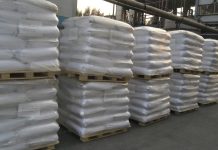Low-level laser therapy (LLLT) devices, commonly referred to as cold laser therapy devices, provide a non-invasive, drug-free method of tissue repair and pain control. These gadgets penetrate the skin and release low-intensity laser or LED light, which promotes cellular activity and improves healing. Cold laser therapy is frequently utilized by medical experts to treat a range of ailments, including wound healing, inflammation, and musculoskeletal discomfort.
The gadgets are frequently utilized in conjunction with extensive treatment plans because they are safe and unlikely to have negative consequences. Some cold laser therapy device are straightforward to use and portable enough to be used at home, giving people the opportunity to benefit from this technology in the comfort of their surroundings. Consult a healthcare provider at all times.
Safety Measures Need To Be Followed When Receiving Cold Laser Therapy
This text presents a complete manual of the protection precautions that should be taken through bloodless laser therapy sessions.
Expert qualifications
One of the primary protection precautions is ensuring that cold laser remedy is administered by qualified and skilled specialists. Healthcare practitioners, inclusive of physiotherapists, chiropractors, or clinical docs, need to have the vital knowledge to evaluate and address character health conditions.
Patient assessment
Before beginning bloodless laser therapy, a thorough affected person evaluation is vital. This includes comparing the patient’s medical history, existing health conditions, medicinal drugs, and any contraindications that can impact the protection and effectiveness of the remedy.
Eye Safety
One of the particular safety concerns in cold laser remedies is the capacity chance to the eyes. Protecting eyewear for both the affected person and the practitioner is vital to prevent accidental exposure to the laser or LED mild, which may cause eye injury.
Contraindications
Identifying contraindications is crucial to keep away from capability complications. Cold laser therapy may not be suitable for individuals with a record of seizures, people with active malignancies, or pregnant girls, amongst others. Cautious screening helps in determining if the remedy is appropriate for a particular character.
Tool Calibration and Preservation
Regular calibration and preservation of the cold laser therapy tool are imperative to ensure accurate and steady remedy shipping. Deviations in electricity output or wavelength can affect the effectiveness and protection of the therapy.
Dosage and Treatment Duration
Adhering to encouraged dosage recommendations and treatment intervals is important. Overexposure to laser light can have damaging consequences, and the practitioner needs to observe mounted protocols to avoid immoderate electricity delivery.
Pores and Skin Sensitivity
Assessing pores and skin sensitivity is essential, specifically for people with conditions such as photosensitivity. Tracking the pores and skin for any destructive reactions at some stage in and after the consultation allows us to figure out ability troubles.
Affected Person’s Verbal Exchange
Open and clear communication with the affected person is critical. Explaining the procedure, potential sensations at some stage in the session, and any up-remedy instructions fosters a feeling of belief and ensures that the affected person feels informed and at ease at some point in the process.
Remedy Place Guidance
Making sure that the remedy region is easy and free from any substances that may engage with the laser mild is vital. This includes doing away with make-up, creams, or any reflective substances that could intervene with the penetration of the laser.
Temperature law
Preserving a relaxed temperature in the remedy room is critical for the patient’s well-being. Extreme temperatures can affect the affected person’s experience and may impact the effectiveness of the remedy.
Keeping an Eye on Vital Signs
In certain instances, particularly when managing individuals with cardiovascular ailments, it may be imperative to keep an eye on key indicators like blood pressure and heart rate before, during, and following the session to guarantee everyone’s safety.
Knowledgeable Assent
One of the most important steps in guaranteeing safety is getting the patient’s informed permission. To empower the patient to make an informed choice, this procedure entails outlining the nature of the treatment, any possible dangers, advantages, and alternative possibilities.
Conclusion
When used by trained experts who follow established safety protocols, traditional laser therapy is generally regarded as safe. Through appropriate patient evaluation, careful gadget upkeep, and emergency readiness, a comprehensive approach to safety guarantees that people can confidently make use of this treatment modality. More study and adherence to safety regulations will be necessary to ensure that it is safe, effective, and accepted in a variety of healthcare settings.







